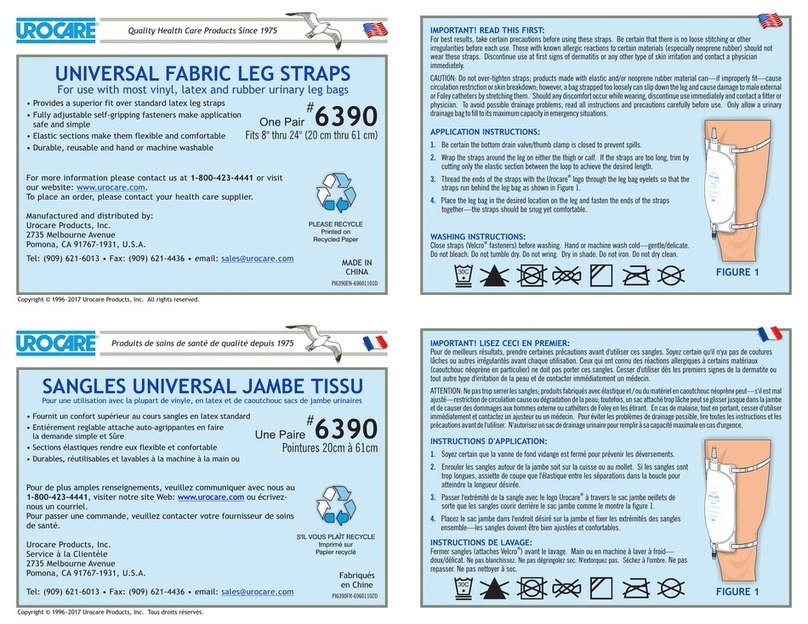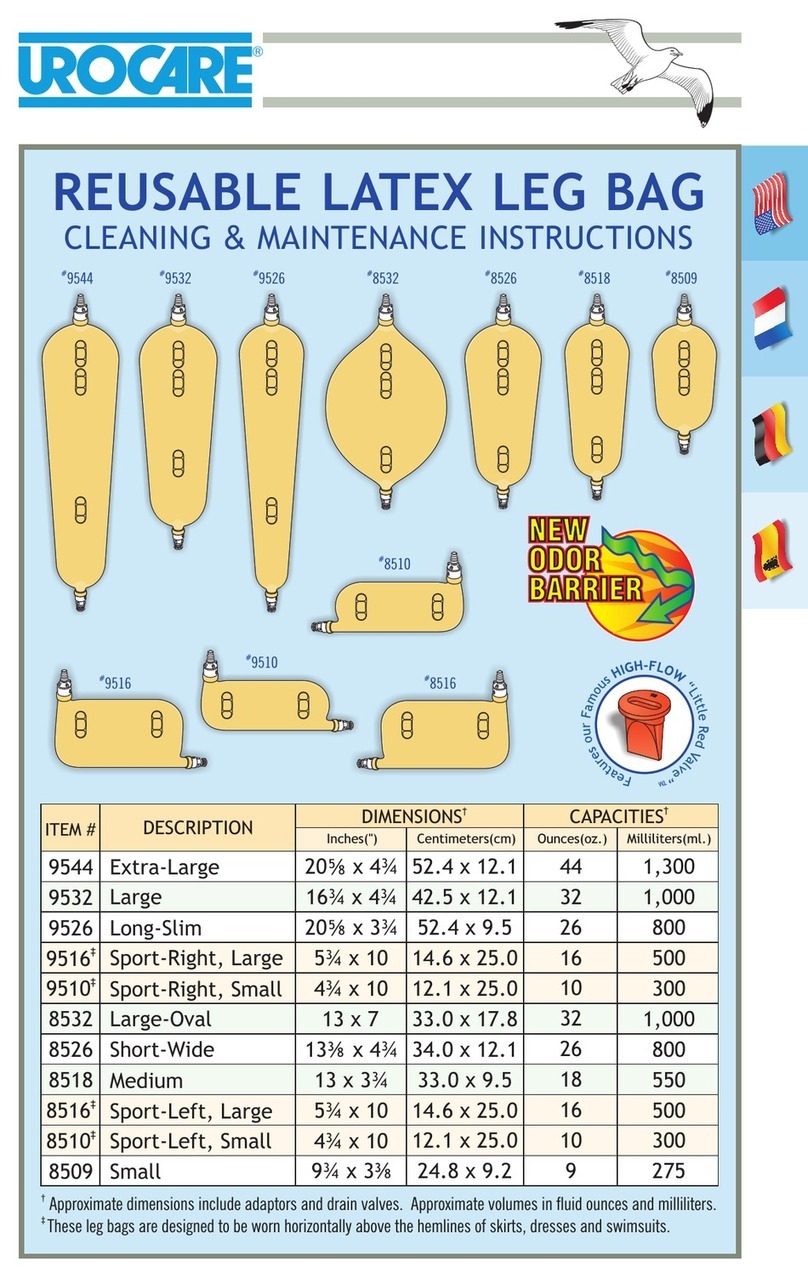
IMPORTANT! READ THIS FIRST:
FOR USE WITH FOLEY CATHETERS:
FOR USE WITH MALE EXTERNAL CATHETERS:
KEEPING YOUR NIGHT DRAIN BOTTLE CLEAN:
1.
2.
3.
4.
1.
2.
3.
4.
5.
To avoid possible drainage problems, read all instructions and precautions carefully
before use. Bottle must always remain in an upright position during use; if it is pulled or
tipped over, urine may leak from the vented bottle cap.
Since the red anti-reflux valve (No. 6001) serves two purposes; one, as an anti-reflux
valve and two, as a gasket to prevent leaking, it is important that the valve remain in
place during use. If use of the anti-reflux valve is not desired, Gasket-Ring (No. 6000)
will be necessary to seal the threads of the top valve housing to prevent leaks.
Remove the protective cap from the cone-shaped adaptor on the clear-vinyl
drainage tube (No. 6060)—see Figure 1. Attach the outlet end of the catheter to
the cone-shaped adaptor on the drainage tube.
Secure the opposite end of the clear-vinyl drainage tube to the Night Drain Bottle
Adaptor (No. 6003).
Insert the anti-reflux valve (No. 6001) into the Top Valve Housing located on the top
of the bottle cap (No. 4101)—see Figure 2.
Connect the adaptor (No. 6003) to the Top Valve Housing and the bottle cap (No.
4101) to the drain bottle (No. 410001)—see Figure 3.
Remove the protective cap from the cone-shaped adaptor on the clear-vinyl
drainage tube (No. 6060)—see Figure 1. Attach the outlet end of the catheter to
the cone-shaped adaptor on the drainage tube.
Secure the opposite end of the clear-vinyl drainage tube to the Night Drain Bottle
Adaptor (No. 6003).
Insert the anti-reflux valve (No. 6001) into the Top Valve Housing located on the top
of the bottle cap (No. 4101)—see Figure 2.
Connect the adaptor (No. 6003) to the Top Valve Housing and the bottle cap (No.
4101) to the drain bottle (No. 410001)—see Figure 3.
After the catheter, drainage tube, bottle cap and bottle are connected, any air
remaining in the catheter must be squeezed into the bottle. This will ensure that the
one-way inlet (anti-reflux) valve is working properly and a siphon is more easily
created when urine is passed. Priming the system with plain tap water before use
will ensure an immediate siphon condition.
The best time to clean a urinary appliance is immediately after use. Rinsing alone
does not clean a urinary appliance and the use of vinegar, bleaches or toilet bowl
cleaners only hardens, distorts and damages rubber, latex and plastic parts.
Improper or inadequate cleaning can cause irreversible damage and
discoloration of most urine collection systems... not to mention the unpleasant and
embarrassing odors.
We recommend the use of Urolux® urinary and ostomy appliance cleanser &
deodorant. When this concentrated solution is mixed with water, it cleans and
deodorizes urinary and ostomy appliances. Crystal build-ups are dissolved and
unpleasant odors are eliminated.























